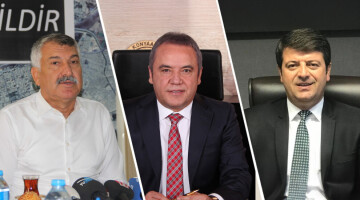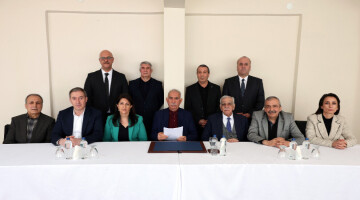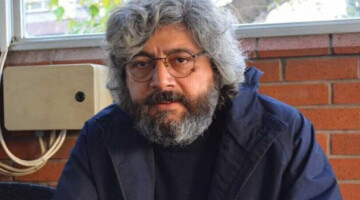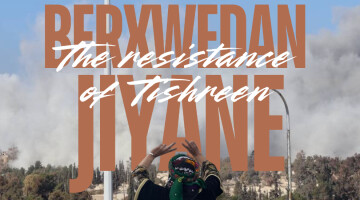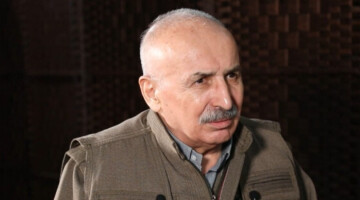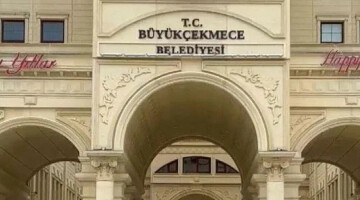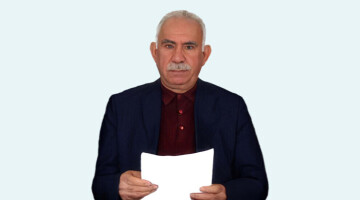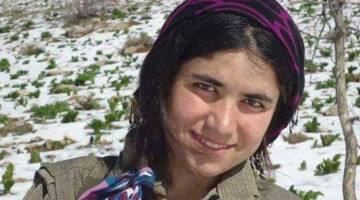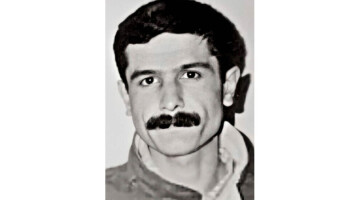The Turkish state, using NATO weapons, backed by Russia and thousands of mercenaries, started an occupation campaign against Afrin on January 20, 2018. Led by the People’s Defense Units (YPG) and the Women’s Defense Units (YPJ), all components of Afrin, including the Revolutionary Forces, Self-Defense Units, Asayish and the HPC heroically resisted against the Turkish attacks. The people of Afrin along with their defense forces paid a heavy price to defend Afrin and relentlessly resisted for 58 days.
The occupation began on three different fronts
In Afrin which was surrounded by Turkish army and its mercenaries on three sides, the invasion simultaneously began from Azaz town on the eastern front, from Turkish city of Kilis in the north, from Hatay region on the western front, and the IDP camp of Atme in the southwest. The occupying Turkish state and its mercenary groups could not secure any significant advance in face of the resistance led by the YPG and YPJ forces. They received heavy blows and lost many in their ranks.
Non-stop bombardment with heavy weapons
After heavy casualties, the Turkish army tried to achieve results through aerial bombardment. Mobilizing their warplanes and drones, the Turkish army bombed the residential areas of Afrin 24 hours a day. Hundreds of civilians lost their lives and over a thousand others were severely injured.
The international community was deaf and blind
A district in the Aleppo province, Afrin resisted insistently at seven different regions, Jindires, Shiye, Mabeta, Rajo, Bilbilê, Shera and Sherawa. The people of Afrin, with a great deal of sacrifice, in many cases moved to the areas which were being bombed and proved that they stand with their defense forces. Yet the international community was deaf and blind when it came to the crimes committed by the Turkish states.
Despite a resolution by the UN Security Council, Turkey carried out a massacre in Afrin
Due to a deal between Russia and Turkey over Afrin and East Ghouta, evacuation of East Ghouta was on agenda at the same time. The United Nation’s Security Council then adopted a resolution to cease fire in Syria for at least one month. Yet the Turkish state did not adhere to the resolution and continued its attacks against Afrin. The international community again pretended that nothing was happening in Afrin.
Peoples marched to Afrin
In order to stop the illegal occupation of Afrin by Turkey, thousands of Kurds, Arabs, Syriacs, Turkmen, Circassians, Yazidis and Armenians in the North and East Syria flocked to Afrin in Syria’s northwest corner. The human shields campaign was initiated from the beginning of February and lasted until mid-March 2018. Similarly in South Kurdistan and Shengal, people took to the streets in support of Afrin resistance. With the continual obstacles by the Syrian regime and Russia, despite aerial bombings, the people reached Afrin and took turns in the human shields campaign.
A resistance full of sacrifices
Hundreds of fighters from the YPG/YPJ, Revolutionary Forces, the Asayish and HPC members resisted against Turkish attacks and lost their lives. During the ‘Kurmanj Mountain Resistance’ which is known as the ‘Resistance of Age, many fighters and commanders sacrificed their lives, hence they left their mark in the history of Afrin, and left the liberation of Afrin as their will.
The martyrs of Kurmanj Mountain
Afrin is the birthplace of heroines like Arin Mirkan who was a symbol of the resistance of Kobane. Avesta Xabûr (Zelûx Hemo), Barîn Kobanê (Emîne Mistefa Omer), Karker Çiya (Dindar Bozan), Polat Efrîn (Merwan Omer), Îlan Kobanê (Ehmed Welo), Rêber Celal (Receb Ayar), Qehreman Cûdî (Remedan Bico), Rosyar Vejîn (Gulistan Hec Mislim), Viyan Tolhildan (Gulistan Elî) and Xemgîn Efrîn (Îmad Sido) were fighters and commanders who paid the utmost sacrifice to preserve the freedom of Afrin.
Severe blows were inflicted to the Turkish army and its mercenaries
The YPG and YPJ fighters during the first phase of the Resistance of Age, which endured for 58 days, delivered severe blows to the occupying forces, particularly in Afrin’s Rajo front. Most specifically, in Şêxûrzê, Basûtê, Gundê Mezin, Gobelê and Kîmarê areas of Afrin, the Turkish occupation forces suffered heavy casualties.
The administration in Afrin decided to evacuate the people
Since the civilians were directly targeted by the Turkish occupation and there was a growing risk of massacre, the administration in Afrin decided on March 16 to evacuate the civilian population from the city. Yet the YPG and YPJ forces changed their tactics and initiated a phase of guerrilla style actions. Later on, the ‘Wrath of the Olive’ and ‘Afrin Liberation Forces’ were established. For a year now, the resistance continues, and Turkish occupation forces are targeted on a daily basis in and around Afrin.
The historic resistance of 58 days
The Democratic Self-Administration in Afrin issued a statement on March 18 in Shehba region and said: “The resistance in Afrin has entered a new era. In order to prevent a humanitarian disaster, we have decided to evacuate the civilians outside of Afrin.”
The statement also mentioned that more than 500 Afrin residents were killed by the Turkish state, including women, children and elderly, while 1030 civilians were injured. 820 Afrin freedom fighters sacrificed their lives to defend the city.


